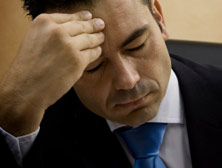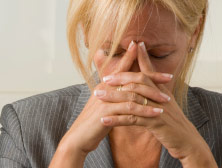MigraineHelper.com
 |
 |
 |
 |
Childhood Migraine Symptoms8 Million KidsSome people are surprised to hear that children can get migraines, though the condition is more common in children than you might have thought: more than 8 million children get migraines every year, resulting in a cumulative loss of 1 million schooldays. Migraine headaches tend to begin early on: in childhood, during the teenaged years or in the early adult years. The outcome is good in these cases, since migraine attacks may come with less frequency and grow milder in intensity with age. The migraines may even cease altogether with the onset of adulthood. However, the physical symptoms can mean a lot of absences from school as well as trips to the emergency room. That could land parents in a heap of trouble since they may need to miss work to care for their children. Both Sides NowPediatric migraines tend to be briefer than adult migraines, but the pain may be just as incapacitating. There may be some accompanying nausea, vomiting, photosensitivity, a feeling of lightheadedness, and extra-sensitivity to sound. Unlike the migraines of an adult, a child's migraines tend to affect both sides of the head, though adolescent migraines, like adult migraines, affect only one side of the head. Sometimes a child has all the signs of a migraine except for the head pain. This type of migraine, sometimes called an abdominal migraine, is often very difficult to diagnose. Just as in adult migraines, there may be an aura to warn of an impending child migraine attack. The aura tends to consist of patterned lines or shadows in front of the eyes within half an hour to an hour of the headache. When the headache comes, the aura dissipates. As in adult migraines, those migraines with no aura are designated as common, and those with aura are called classic migraines. The symptoms of child migraines do differ from an adult's in some important aspects. Your child's physician will be looking for certain recurrent conditions such as vomiting, tummy aches, and dizzy spells. Some other symptoms to watch for include: loss of appetite, diarrhea, constipation, hot flashes, and cold extremities. Children may waken from sleep with a migraine or have a migraine upon awakening. The child may appear to be irritable, depressed, pale or fatigued for a day or two before the headache begins. Just as in adults, there may be periods of restlessness, wakefulness, and elation. Some of these symptoms are noticed more by the parents of the child than by the child himself. A few hours of sleep may bring relief to a child migraine sufferer, though this is not usually the case in adult migraines. The positive side of all this is that the medications that work for adult migraines can also help children. If your child is suffering from migraine symptoms and losing out on classroom time, it's time for a talk with your pediatrician. Your child's doctor may want to give you a referral for your child to see a pediatric neurologist. |
n |